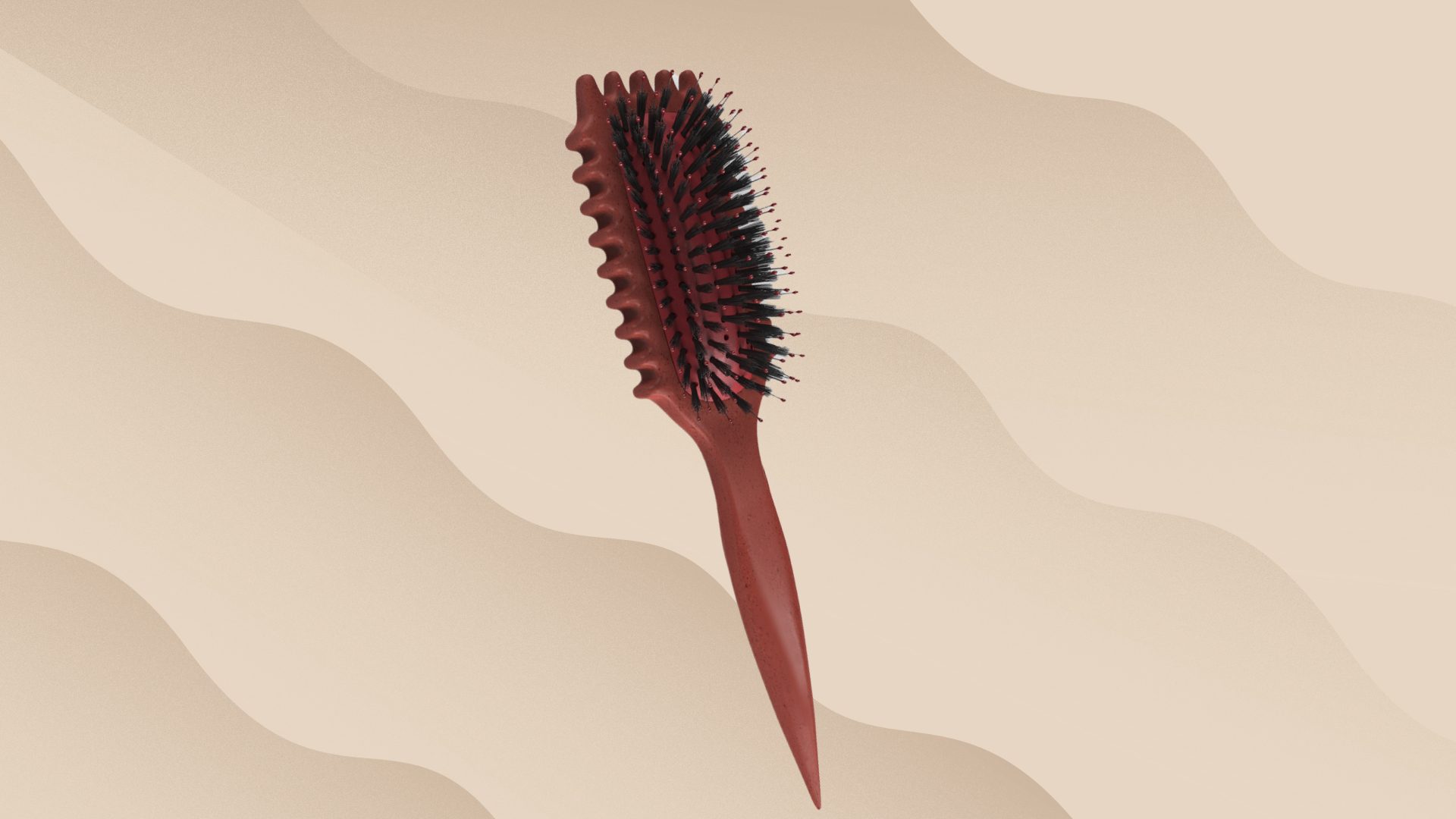

One of the many conundrums in the world of curly hair is that some people experience a relaxation of their curls as their hair gains length, while others experience the converse: their curl increases with the length of their hair.
The former trend makes sense without having to give it much thought. Longer hair has more weight and is pulled down by gravity, which lengthens and loosens the curl. However, the latter phenomenon seems counterintuitive.
This behavior can be so perplexing, causing curls to disappear with a haircut or to suddenly begin developing as someone grows their hair out for perhaps the first time. While this seeming contradiction may be baffling and even frustrating, it is possible to understand what is going on if one looks at what causes hair to curl and some mathematic principles that can be used to describe curly hair.
Morphology of Hair
Human hair is a marvelously complex biomaterial, comprised of many nanoscale substructures woven together into intricate patterns, both beautiful and functional. The building block of hair is the protein keratin, which is made up of long chains of amino acids. The amino acids in the keratin strands have very specific bond geometries that give the fiber an α-helical conformation. Individual keratin fibers bundle together with other keratin fibers to form aggregates called microfibrils. Clusters of microfibrils bundle together into macrofibrillar structures which occupy the central cortex of the hair. Fatty acids and keratin-based cuticles encapsulate the entire strand.
Human hair keratin is made up of 14 percent sulfur-containing amino acids (cysteine and cystine”>. It is from these amino acids that many of the properties of hair are developed, particularly curl. When two strands of keratin are adjacent to one another, the –SH bonds for nearby cystine groups can be oxidized to form a disulfide (S-S”> bond between the two strands. This is a chemical crosslink that ties the adjacent keratin strands together. A high proportion of disulfide bonds twist the hair strand into a helical pattern. Adjacent hair strands tend to assume the same pattern, and then cluster together into multi-helical structures that form curls. In this manner, the nanoscopic structure is repeated at the macroscopic level. Nature loves patterns.
The permanent wave process exploits this by breaking disulfide bonds and then reforming them (and forming new ones”> with hair locked into the desired helical shape.
There are a number of factors that contribute to degree of curliness. These include, but are not limited to:
- Shape of the hair follicle – Teardrop-shaped, cylindrical and oval follicles all produce hair with differing degrees of curl.
- Angle of emergence of hair from scalp – Super curly hair has been found to emerge from the scalp at a different angle than straight hair.
- Cross-sectional geometry of hair strand – Completely cylindrical hair strands are straight, while oval strands have more wavy characteristics. Flat, ribbon-like strands result in extremely kinky curly hair.
- Quantity of disulfide bonds – A higher concentration of disulfide bonds results in a more pronounced helical pattern.
- Prevalent morphology of cortex cells – The aggregation pattern of the macrofibrillar structures in the cortex affects the degree of curliness.
- Presence of other genes or proteins – Several different research groups are exploring the presence of a protein that seems responsible for curl formation.
Helical Structures
We have established that the helix structure repeats throughout the hair from its most basic molecular building blocks into the bulk hair pattern. But what exactly is a helix? You may recall the spiral staircase geometry of the DNA-double helix strand from high school biology. A helix is a ribbon-like coil that occupies three-dimensions and is governed by specific trigonometric equations used to describe the length of revolutions and the pitch angle.
X (t”> = r cos t
Y(t”> = r sin t
Z = ct
Where t = [0,2π], c = constant, r = radius, and 2πc = vertical separation of the loops.
This three-dimensional mathematics can become a bit tricky to visualize, so it can be easier to eliminate the third dimension (z”> and think in terms of two-dimensional sine waves. Sine waves can be used to model many different types of oscillating cycles that occur throughout nature, such as sound waves, visible light waves, and radio waves. In trigonometry, we call the length of time or distance it takes to complete one full cycle the period.
If one were to examine a spiral hair curl, it would be possible to see that one full curl revolution would be equal to one complete cycle or sine wave. The distance required to complete one full cycle varies for everyone. Very kinky curly hair would complete more revolutions per the same distance than hair that is less curly. Think of it as higher frequency curl pattern.
Take an example of three different people, with three different degrees of curl, all having hair nine inches in length.
Person A: Her hair completes one full spiral in one inch. In nine inches, it complete nine full revolutions and appears to very kinky curly. If she were to grow it out longer, the weight would eventually stretch the curls out a bit, so that her curl pattern would relax. She would be said to have Type 4 hair.
Person B: Her hair completes one one full spiral every three inches. In nine inches, her hair completes three full revolutions and appears to be mildly curly. If she were to cut it short, it would appear wavy or even straight, but grown longer, it would develop into well-defined spiral curls. She would probably be said to have Botticelli or Type 3 hair.
Person C: Her hair completes one full revolution in six inches. In nine inches of length, her hair only completes one-and-a-half revolutions and appears merely wavy. If she were to trim her hair to be six inches or less in length, it would appear straight. If she were to allow it to grow out to be very long (eighteen inches or more”>, she would begin to see a pronounced curl pattern emerge. She might be said to have Type 2 or Type 3 hair, or even straight hair, depending upon its length.
Want More?
Find out how you should handle diluted and homemade products. Heads up: it can be dangerous!
Final Thoughts
Human hair is such an intricate structure, and it varies so much from person to person. The helical structure present in our very DNA makes itself apparent on a nano-level in the keratin strands that make up the foundation of our hair and is repeated at higher and higher levels until it is expressed in the gorgeous spiraling curls of our “kinky-haired” sisters and brothers.
Most of us with curly hair find ourselves with a mixture of all sorts of curl types on our heads, and we spend a lot of time and effort attempting to enhance, define and control them. Those with hair that takes longer lengths to really develop and show the curl patterns would do well to keep that in mind when cutting out hair. Lack of caution can lead to a disappearance of those precious curls. Remember the mathematics.
In order to get the best results in your curl pattern, you can figure out what your length for one revolution is and keep it in mind when growing or cutting your hair.






